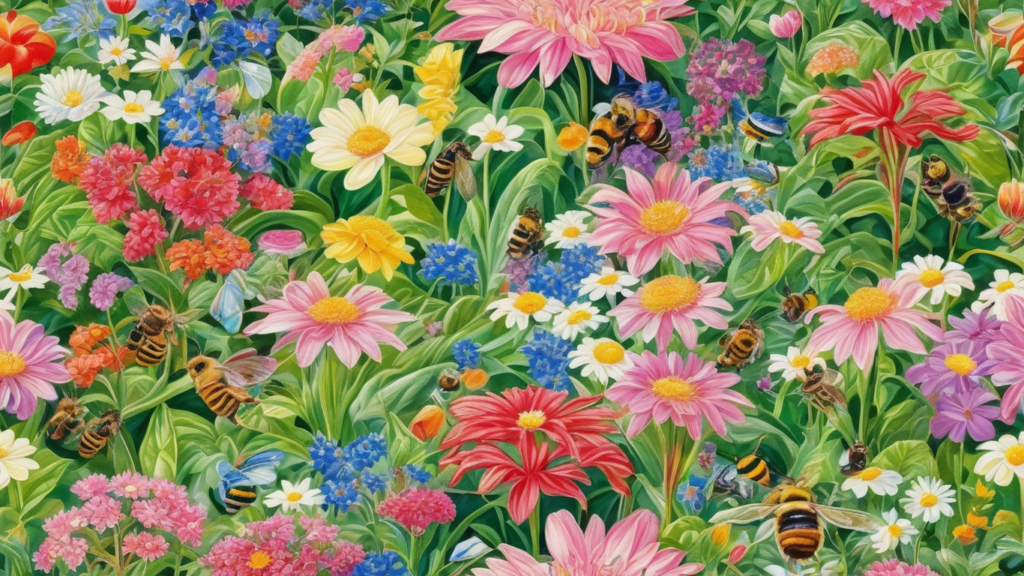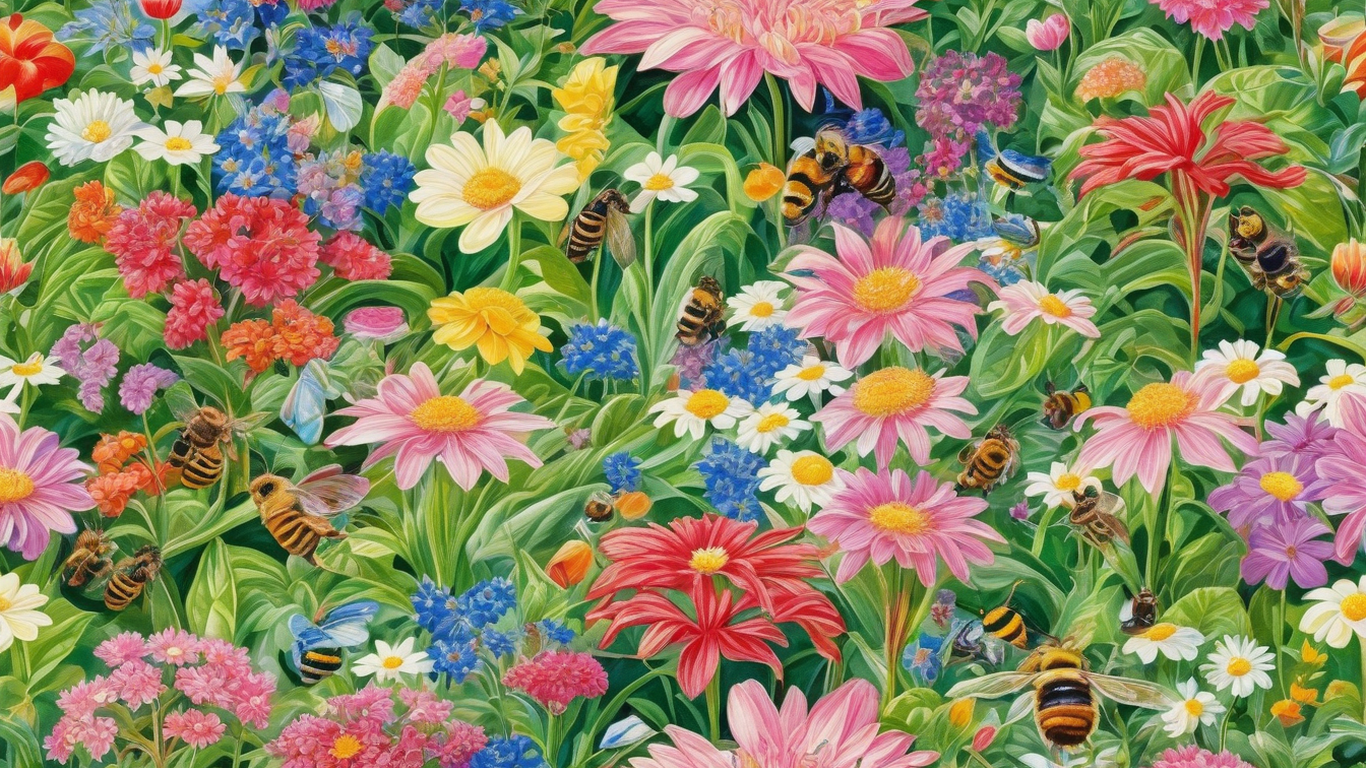- Introduction to Flower Gardening
- Understanding the Basics
- Benefits of Flower Gardening
- Choosing the Right Flowers
- Consideration of Climate and Soil
- Annuals vs. Perennials
- Planning Your Garden Layout
- Sunlight and Shade Requirements
- Companion Planting Techniques
- Preparing the Soil
- Soil Testing and Amendments
- Importance of Soil Drainage
- Planting and Maintenance
- Proper Planting Depth and Spacing
- Watering and Fertilizing Tips
- Pest and Disease Management
- Identifying Common Pests and Diseases
- Organic Pest Control Methods
- Pruning and Deadheading
- Techniques for Promoting Growth and Flowering
- Tools and Timing for Pruning
- Seasonal Care
- Winter Protection for Tender Plants
- Summer Heat Management
- Harvesting and Enjoying Your Flowers
- Tips for Prolonging Flower Life
- Creative Ways to Display Cut Flowers
- Common Mistakes to Avoid
- Overcrowding and Underwatering
- Neglecting Pest Prevention
- Frequently Asked Questions (FAQs)
- What are some easy-to-grow flowers for beginners?
- How often should I water my flower garden?
- Can I grow flowers in containers?
- What should I do if my flowers are not blooming?
- Are there any natural ways to deter garden pests?
Ok, let’s get started. Here we go…
Flower Gardening Tips for Beginners

Introduction to Flower Gardening
Flower gardening is a rewarding hobby that allows individuals to create stunning displays of color and fragrance right in their own backyard. Whether you’re a seasoned gardener or just starting out, there are plenty of tips and tricks to help you succeed.
Understanding the Basics
Before diving into the world of flower gardening, it’s essential to understand the basics. This includes learning about different types of flowers, their growth habits, and their specific needs.
Benefits of Flower Gardening
Aside from the aesthetic appeal, flower gardening offers numerous benefits. It can improve mood, reduce stress, and even attract beneficial insects and pollinators to your garden.
Choosing the Right Flowers
One of the first steps in flower gardening is selecting the right plants for your garden. Consider factors such as your climate, soil type, and available space.
Consideration of Climate and Soil
Certain flowers thrive in specific climates and soil conditions. Research which flowers are best suited to your region to ensure success in your garden.
Annuals vs. Perennials
When choosing flowers, decide whether you want to plant annuals, which bloom for one season, or perennials, which come back year after year. Mixing both types can provide continuous color throughout the seasons.
Planning Your Garden Layout
Proper planning is essential for a successful flower garden. Take into account factors such as sunlight, shade, and the mature size of your plants.
Sunlight and Shade Requirements
Different flowers have varying sunlight requirements. Place sun-loving plants in areas that receive full sunlight, while shade-loving varieties should be planted in areas with partial or full shade.
Companion Planting Techniques
Utilize companion planting techniques to maximize space and encourage healthy growth. Pairing compatible plants can help deter pests, improve soil fertility, and attract beneficial insects.
Preparing the Soil
Healthy soil is the foundation of a thriving garden. Before planting, test your soil and make any necessary amendments to ensure optimal growing conditions.
Soil Testing and Amendments
Use a soil test kit to determine the pH and nutrient levels of your soil. Based on the results, add organic matter, such as compost or aged manure, to improve soil structure and fertility.
Importance of Soil Drainage
Good drainage is crucial for preventing waterlogged soil, which can lead to root rot and other problems. Incorporate organic matter into heavy clay soils to improve drainage, or consider raised beds for better control over soil conditions.
Planting and Maintenance
Proper planting and maintenance practices are essential for the health and vitality of your flower garden.
Proper Planting Depth and Spacing
Follow planting guidelines for each type of flower to ensure proper depth and spacing. Overcrowding can lead to competition for resources and poor growth.
Watering and Fertilizing Tips
Water deeply and infrequently to encourage deep root growth and drought tolerance. Apply a balanced fertilizer according to the needs of your plants, being careful not to over-fertilize, which can lead to nutrient imbalances.
Pest and Disease Management
Keep an eye out for common pests and diseases that can damage your flowers. Early detection and prevention are key to minimizing damage.
Identifying Common Pests and Diseases
Learn to recognize signs of pest infestations and disease infections, such as chewed leaves, yellowing foliage, or fungal growth. Promptly address any issues to prevent further spread.
Organic Pest Control Methods
Consider using natural predators, such as ladybugs or praying mantises, to control pest populations. Additionally, companion planting and homemade remedies, such as garlic spray or neem oil, can help deter pests without the use of harmful chemicals.
Pruning and Deadheading
Regular pruning and deadheading are essential for maintaining the health and appearance of your flower garden.
Techniques for Promoting Growth and Flowering
Prune dead or damaged branches to encourage new growth and remove spent flowers to prolong blooming. Use clean, sharp tools to make precise cuts and minimize stress on the plant.
Tools and Timing for Pruning
Invest in quality pruning tools, such as bypass pruners or hedge shears, for precise and efficient pruning. Timing is also important; prune spring-flowering shrubs after they bloom and summer-flowering shrubs in late winter or early spring.
Seasonal Care
Adjust your gardening practices according to the changing seasons to ensure your flowers thrive year-round.
Winter Protection for Tender Plants
Provide winter protection for tender plants, such as mulching around the base to insulate roots or covering with burlap to shield from harsh winds.
Summer Heat Management
During hot summer months, mulch around plants to retain soil moisture and provide shade for sensitive species. Water early in the morning or late in the evening to minimize water loss through evaporation.
Harvesting and Enjoying Your Flowers
One of the most rewarding aspects of flower gardening is being able to enjoy your blooms both in the garden and indoors.
Tips for Prolonging Flower Life
Cut flowers early in the morning when they are fully hydrated and place them immediately in water. Change the water every few days and trim the stems at an angle to encourage water uptake.
Creative Ways to Display Cut Flowers
Get creative with your flower arrangements by incorporating different colors, textures, and heights. Use unconventional containers, such as mason jars or teacups, for a unique and personal touch.
Common Mistakes to Avoid
Even seasoned gardeners can fall prey to common pitfalls in flower gardening. Here are some mistakes to watch out for:
Overcrowding and Underwatering
Planting too many flowers in a small space can lead to overcrowding, competition for resources, and poor airflow, increasing the risk of disease. Similarly, neglecting to water your garden regularly can result in stressed and wilted plants.
Neglecting Pest Prevention
Ignoring signs of pest infestation can quickly escalate into a full-blown infestation that devastates your garden. Regular monitoring and proactive pest prevention measures are crucial for maintaining plant health.
Frequently Asked Questions (FAQs)
- What are some easy-to-grow flowers for beginners?
- Marigolds, zinnias, and cosmos are excellent choices for novice gardeners due to their resilience and low maintenance requirements.
- How often should I water my flower garden?
- The frequency of watering depends on factors such as soil type, weather conditions, and plant needs. As a general rule, aim to keep the soil consistently moist but not waterlogged.
- Can I grow flowers in containers?
- Yes, many flowers thrive in containers, making them a versatile option for small spaces or urban gardens. Choose compact varieties and ensure proper drainage to prevent waterlogging.
- What should I do if my flowers are not blooming?
- Lack of blooming can be caused by various factors, including insufficient sunlight, improper pruning, or nutrient deficiencies. Assess the growing conditions and make adjustments as needed to encourage flowering.
- Are there any natural ways to deter garden pests?
- Yes, several natural pest control methods, such as companion planting, homemade insecticidal sprays, and attracting beneficial insects, can help deter pests without resorting to chemical pesticides.
Even seasoned gardeners can fall prey to common pitfalls in flower gardening. Here are some mistakes to watch out for:
Overcrowding and Underwatering
Planting too many flowers in a small space can lead to overcrowding, competition for resources, and poor airflow, increasing the risk of disease. Similarly, neglecting to water your garden regularly can result in stressed and wilted plants.
Neglecting Pest Prevention
Ignoring signs of pest infestation can quickly escalate into a full-blown infestation that devastates your garden. Regular monitoring and proactive pest prevention measures are crucial for maintaining plant health.
Frequently Asked Questions (FAQs)
- What are some easy-to-grow flowers for beginners?
- Marigolds, zinnias, and cosmos are excellent choices for novice gardeners due to their resilience and low maintenance requirements.
- How often should I water my flower garden?
- The frequency of watering depends on factors such as soil type, weather conditions, and plant needs. As a general rule, aim to keep the soil consistently moist but not waterlogged.
- Can I grow flowers in containers?
- Yes, many flowers thrive in containers, making them a versatile option for small spaces or urban gardens. Choose compact varieties and ensure proper drainage to prevent waterlogging.
- What should I do if my flowers are not blooming?
- Lack of blooming can be caused by various factors, including insufficient sunlight, improper pruning, or nutrient deficiencies. Assess the growing conditions and make adjustments as needed to encourage flowering.
- Are there any natural ways to deter garden pests?
- Yes, several natural pest control methods, such as companion planting, homemade insecticidal sprays, and attracting beneficial insects, can help deter pests without resorting to chemical pesticides.
